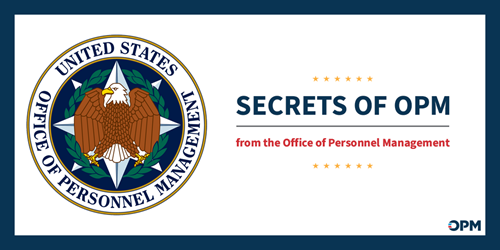Why ask "why?"

By Scott Kupor, Director, U.S. Office of Personnel Management
October 10, 2025
If you’ve been reading my blogs, you’ll know I often talk about transformation—big, bold changes to modernize how we at the Office of Personnel Management (OPM) recruit, hire, and manage the federal workforce. But not every important change comes from a big announcement or from sweeping reforms. Rather, progress often happens quietly and incrementally, through small, practical changes that simply make government more efficient.
Sometimes you just need to ask “why?” Why are we doing things this way? Why can’t we change it?
There of course may be legitimate reasons for doing something – e.g., perhaps the agency has a statutory obligation from Congress. But often asking why reveals a more common answer – some urban legend has grown around a process (or a risk) that dictates doing things the same way as in the past. Yet, when you push on the reasons, the logic is flimsy and there is no real reason why we can’t diverge from precedent. Yes, human beings are creatures of habit; change is hard.
At OPM, we’ve made it a priority to ask “why” in our quest to examine where every taxpayer dollar goes. After all, OPM really stands for “Other People’s Money” so it’s our obligation to make sure we’re using taxpayer resources responsibly and efficiently.
And lately, that focus on the little details has led to some impressive results. Here’s a few examples.
We love paper and are premium customers of the U.S. Postal Service – neither of which is good thing! In our retirement services division alone, we spend about five million dollars per year on paper mailings to our annuitants – e.g., sending out 1099-R forms and notices of Cost-of-Living Adjustment, mailing postcards for open enrollment season, etc. This, despite the fact we have email addresses for about two thirds of our annuitants!
So, we asked “why?”
Mostly the answer was precedent, but in some cases, we did have a statutory obligation to get consent for electronic communication for certain mailings. As a result, we are both launching a campaign to get consent (and email addresses for those we are missing) and eliminating paper mailings wherever we can. In doing so, we expect to save three million dollars this fiscal year before eliminating nearly all of the five million dollar run-rate expense each year going forward. That’s money we can more efficiently spend on technology modernization efforts that will benefit our annuitants.
Here's another fun one – and, yes, you are sensing a theme around paper.
In administering health benefits on behalf of federal employees and annuitants, we are required to retain certain records – e.g., medical claims information – for very long periods of time (in some cases up to 129 years!). Today, we spend about three million dollars annually to store 187,000 cubic feet – I have no idea what that means but seems like a big number – of paper files (about 120 million file folders). Just for kicks, we solicited a quote to digitize these documents in lieu of paper storage and were told it would cost about $500 million – no thanks!
Instead, we asked “why?”
Well, it turns out that for some of the files, we could in fact move them to a lower cost commercial storage unit and still comply with the retention rules. We also had a conversation with the agency that manages the record retention rules for the government, and it turns out that 129-years is not required under statute – we can at least halve that time period, allowing us to immediately destroy some files and save $500,000 today. And we also are stopping the bleeding by no longer accepting paper files for any new incoming paperwork. All of these changes will enable us to reduce by at least 50% our annual storage expenses – just by asking “why?”
We’ve undertaken plenty of other even smaller dollar items – e.g., terminating inactive phone lines ($100k/year), converting contractors to FTEs (a 50% annual savings), eliminating a poorly utilized vendor contract ($500k/year), consolidating the more than 250 printers across the agency, reducing peak mainframe (yes, don’t shame us because we still have a mainframe) usage without impacting performance ($100k/year), consolidating websites ($275k/year), etc.
A huge thank you to the dedicated OPM employees who identified and help us implement these changes. Each of them shared in the savings, in a bonus amounting to $10,000.
The truth is that transformation isn’t just about policy or technology. It’s also about stewardship and respecting the trust placed in us to use public resources wisely. It’s about the willingness to ask “why?” in service of the American people. These small, deliberate improvements may not make headlines, but they are the foundation of lasting change.
So, to everyone across OPM who’s spotted an opportunity, asked a tough question, or pushed for a better way to do things: thank you. We will transform our culture one “why” at a time.



